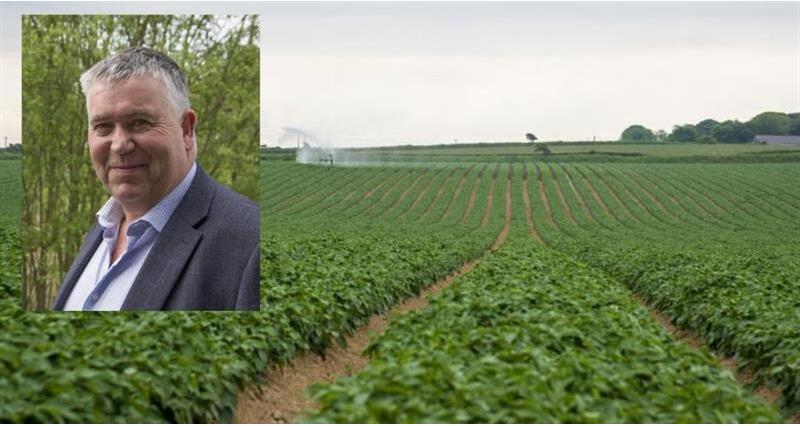The IYPH focus for March is the potato sector. We spoke to Potato Forum Vice Chair Tim Rooke about his business and the plant health challenges facing the industry.
As is the case with potato growers across the UK, one of the biggest concerns for Tim’s business is the loss of the desiccant diquat. Trials have been taking place over the last couple of years to explore alternative desiccation methods, with AHDB announcing the results of recent field trials in January.
Whilst mechanical haulm removal, coupled with the use of weaker desiccants such as carfentrazone and pyraflufen-ethyl, is a likely solution for many growers, flailing late crops is not a guaranteed option for Tim’s North Yorkshire business, which can get plenty of rain in the autumn.
Instead, Tim says a more viable solution is the shift to earlier determinate crops, although variety choice is limited:
Tim Rooke:
“The withdrawal of diquat is the most serious thing that has happened to the potato industry in the last 20 years.
Processors should be developing new varieties that mature earlier in the year; at the moment there is very little choice”
Emma Hamer, NFU plant health expert:
The loss of diquat should encourage the development of IPM alternatives to desiccation. When I attended AHDB SPoT farm trials last Summer I was able to see the results of different combinations of herbicides, flailing, gas burning, haulm pullers, undercutters and the use of Sodium chloride. Some of the results looked very promising, especially the use of salt. An authorisation for use of salt as a basic substance is now being sought by the manufacturer Omex.
Read about the AHDB trials here.
IPM: Control of PCN
Another battle faced by potato growers across the UK are potato cyst nematodes (PCN) which remain the biggest threat to tuber crop yields. We spoke to Tim about his use of a trap crop to reduce PCN populations in his fields. After an initial soil sample to determine PCN levels, Tim drilled Solanum sisymbriifolium, commonly known as ‘sticky nightshade’ to encourage hatching of the nematodes. The aim is to disrupt the lifecycle of the pest. Tim will conduct a second soil sample once the crop is removed, to measure new PCN levels and the effectiveness of the trap crop.
Dr. Chris Hartfield, NFU senior regulatory affairs adviser:
“With rapidly dwindling availability of nematicides, it is essential research effort is put into finding alternatives to control these key pests. At the same time, continuing stewardship is essential to retaining access to remaining products”
For more best practise and stewardship information, visit nspstewardship.co.uk
Check back here later in March to find out the results of Tim’s trap crop trial!
